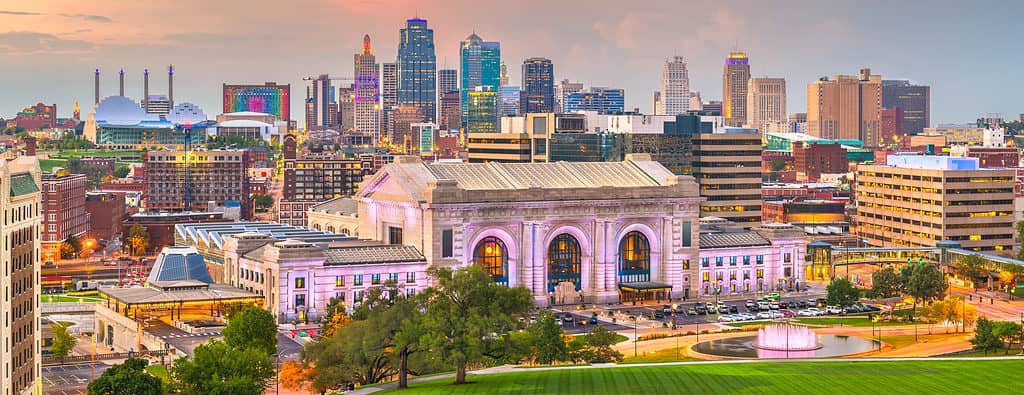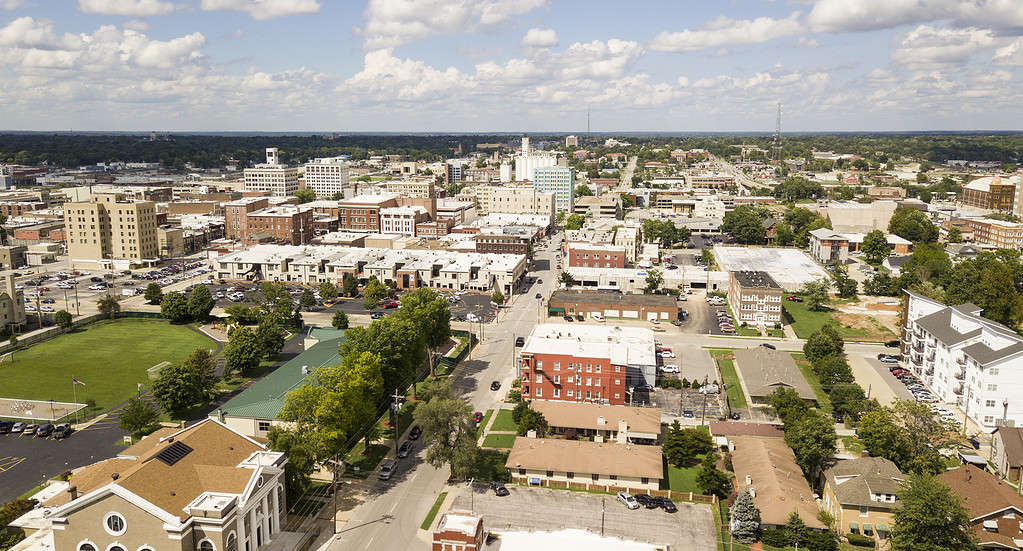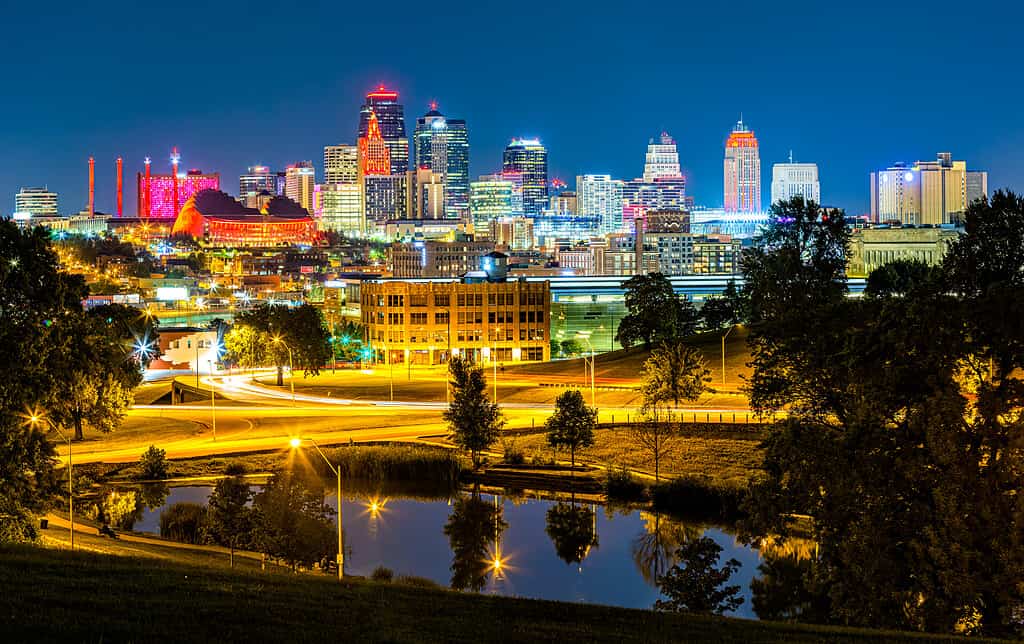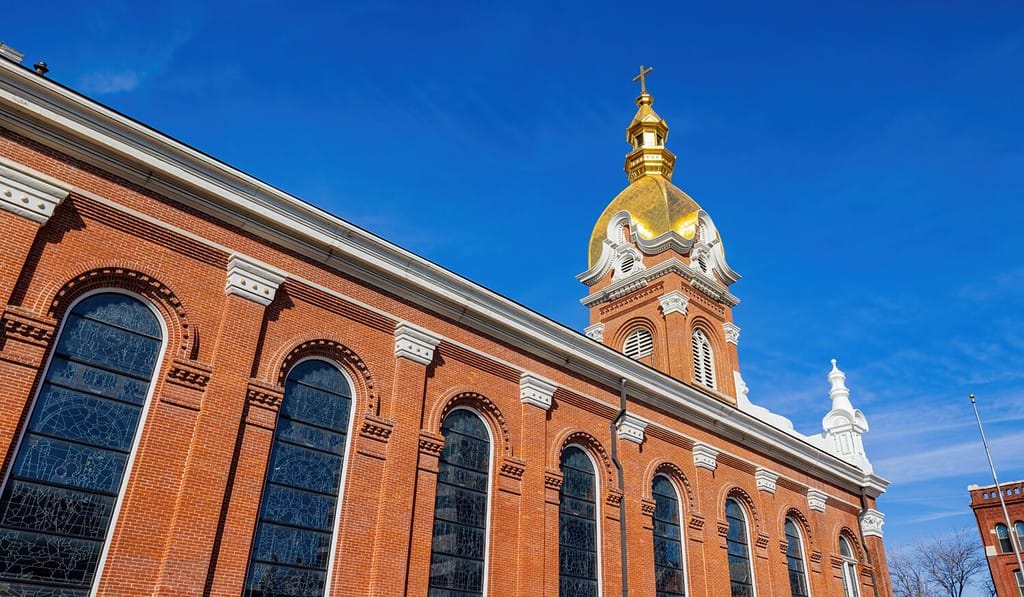Missouri is a state in the Midwest, and it has a mixture of fairly large cities and expansive natural areas. According to the U.S. Census Bureau, the state had a population of 6,154,920 in 2020 during the most recent census. However, the Census Bureau estimated that the population in 2022 was 6,177,957, showing some moderate growth in the state’s population. Today, we are going to look at the largest city in Missouri now and in 2050. We’ll show you which cities in the state are poised to experience the most growth in the coming years and take educated guesses at why people are moving to them.
What Is the Largest City in Missouri Now?

Kansas City is a moderately sized city on the border with Kansas.
©Sean Pavone/Shutterstock.com
The largest city in Missouri now is Kansas City. The city of Kansas City had a population of 507,971 based on data from the 2020 Census. The next largest cities in the state are St. Louis, Springfield, and Columbia. The following chart illustrates their 2020 populations.
| City | 2020 Population |
|---|---|
| Kansas City | 507,971 |
| St. Louis | 301,574 |
| Springfield | 169,168 |
| Columbia | 126,233 |
However, the U.S. Census Bureau has since released population estimates for 2022. Kansas City is now predicted to have 509,297 people living within its borders. The fact that this city is growing during a time when many people are leaving cities behind is significant.
Meanwhile, other cities in the chart, especially St. Louis, are losing residents. So, it seems doubtful that St. Louis, a city that has been decreasing in population for the last decade, will end up surpassing Kansas City as the largest city in the state.
Where Is Kansas City on a Map?
Kansas City is in the northwestern part of Missouri in Jackson County. This county and the city share a border with Kansas to the west. The Kansas River joins the Missouri River middle of the city, flowing far to the east where it will join the Mississippi River in St. Louis.
Overall, Kansas City is not difficult to find on a map since it is a sprawling city that seems to spill across the border into Kansas.
What Will Be the Largest City in Missouri in 2050?

Springfield, Missouri is the third-largest city in the state.
©ChrisBoswell/iStock via Getty Images
The largest city in Missouri in 2050 will be Kansas City. As of 2022, Kansas City was home to 509,297 people. This is a slight increase of about 1,300 people in the city from 2020. This is a small amount of growth, but that doesn’t mean other cities are in a better position to pull ahead of Kansas City.
The city with the second-highest population in Missouri is St. Louis. While some intense growth in the area could help it close the gap with Kansas City, the fact remains that St. Louis has fallen into a population rut. The 2022 population estimates in this region suggest that 5% or 15,000 people left the city, leaving the population at 286,578.
This is down from the 2010 Census which showed a population of 319,294. Thus, it seems that St. Louis is trending in the wrong direction and will not catch Kansas City, Missouri even if the latter does not have an enormous amount of growth.
Considering that Springfield and Columbia both have populations under 200,000, there is practically no way that they can catch Kansas City’s population. Both cities would need to have an unimaginable boom while also generating enough houses and jobs for people in the area.
A Prediction of Kansas City’s Population in 2050

A nighttime view of the largest city in Missouri.
©Ultima_Gaina/iStock via Getty Images
Kansas City’s future is looking bright in terms of population growth. The region has already experienced significant population growth as development in the city’s downtown areas continues.
The downtown area of Kansas City is poised to grow, providing more houses for residents while continuing to offer a strong jobs market. One project says that this area could potentially add as many as 160,000 people between 2010 and 2040.
Currently, about 50,000 people out of that projection have made their way into the city, trickling in during the years 2010 and 2020. The population growth in the largest city in Missouri has slowed a bit in recent years. The costs of housing, economic changes, and the COVID-19 pandemic made some people rethink moving to cities.
However, while many other cities are actively losing members of this population, Kansas City continues to thrive. So, Kansas City is due to add 110,000 people according to the aforementioned projection. The early 2020s saw slow growth that may not resume its former pace for some time, if at all.
So, it may not be a stretch of the imagination to say that the 2040 projection could be pushed back as far as 2050. So, the population in Kansas City in 2050 just might be about 620,000 people.
While Kansas City will probably never be counted among the largest cities in the United States, its growth and development will help the people currently living in the region.
Why Are People Moving to Kansas City?

Kansas City has some beautiful architecture.
©Kit Leong/Shutterstock.com
Knowing that the largest city in Missouri will continue to grow is one thing, but it raises an interesting question. That is, why are people moving to Kansas City? The city offers a lot to the people that move to the area. First and foremost, Kansas City has a strong job market that includes a wide assortment of industries. People from many walks of life can find work in the area.
Also, when compared to large cities on either coast, Kansas City has a lower cost of living. Another benefit of living in this city is that it is well-developed, but still not a never-ending sprawl of buildings. That means people who appreciate city living and still want access to natural areas can find balance in smaller cities like Kansas City. For all these reasons and more, people will continue to move to this region.
Kansas City is the largest city in Missouri now and in 2050. The estimated population for this region in 2050 is about 620,000 people, a modest growth that will take place in the downtown area of the city and its suburbs. This city’s future looks bright!
The photo featured at the top of this post is © Sean Pavone/Shutterstock.com
Thank you for reading! Have some feedback for us? Contact the AZ Animals editorial team.







